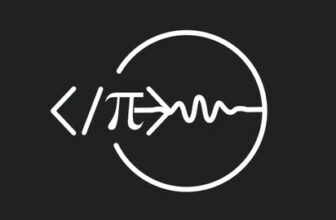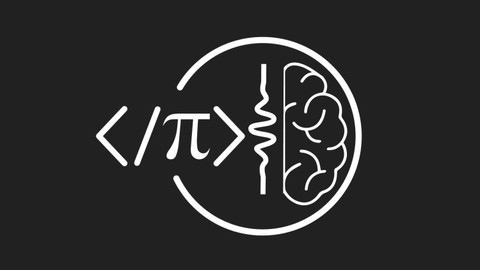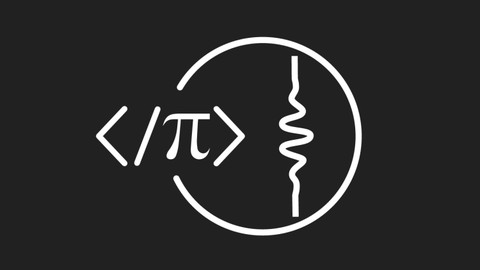Machine Learning A-Z: AI, Python & R + ChatGPT Prize [2025]
![Machine Learning A-Z: AI, Python & R + ChatGPT Prize [2025] 1 Machine Learning A Z](https://couponos.me/wp-content/uploads/Machine-Learning-A-Z-300x169.jpg)
Learn to create Machine Learning Algorithms in Python and R from two Data Science experts. Code templates included.
Product Brand: Udemy
4.5
Udemy Coupon Code for Machine Learning A-Z: AI, Python & R + ChatGPT Prize [2025] Course. Learn to create Machine Learning Algorithms in Python and R from two Data Science experts. Code templates included.
Created by Kirill Eremenko, Hadelin de Ponteves, SuperDataScience Team, Ligency Team | 42.5 hours on-demand video course
Machine Learning Course Overview
Machine Learning A-Z: AI, Python & R + ChatGPT Prize [2025]
Interested in the field of Machine Learning? Then this course is for you!
This course has been designed by a Data Scientist and a Machine Learning expert so that we can share our knowledge and help you learn complex theory, algorithms, and coding libraries in a simple way.
Over 1 Million students world-wide trust this course.
We will walk you step-by-step into the World of Machine Learning. With every tutorial, you will develop new skills and improve your understanding of this challenging yet lucrative sub-field of Data Science.
This course can be completed by either doing either the Python tutorials, or R tutorials, or both – Python & R. Pick the programming language that you need for your career.
This course is fun and exciting, and at the same time, we dive deep into Machine Learning. It is structured the following way:
- Part 1 – Data Preprocessing
- Part 2 – Regression: Simple Linear Regression, Multiple Linear Regression, Polynomial Regression, SVR, Decision Tree Regression, Random Forest Regression
- Part 3 – Classification: Logistic Regression, K-NN, SVM, Kernel SVM, Naive Bayes, Decision Tree Classification, Random Forest Classification
- Part 4 – Clustering: K-Means, Hierarchical Clustering
- Part 5 – Association Rule Learning: Apriori, Eclat
- Part 6 – Reinforcement Learning: Upper Confidence Bound, Thompson Sampling
- Part 7 – Natural Language Processing: Bag-of-words model and algorithms for NLP
- Part 8 – Deep Learning: Artificial Neural Networks, Convolutional Neural Networks
- Part 9 – Dimensionality Reduction: PCA, LDA, Kernel PCA
- Part 10 – Model Selection & Boosting: k-fold Cross Validation, Parameter Tuning, Grid Search, XGBoost
Each section inside each part is independent. So you can either take the whole course from start to finish or you can jump right into any specific section and learn what you need for your career right now.
Moreover, the course is packed with practical exercises that are based on real-life case studies. So not only will you learn the theory, but you will also get lots of hands-on practice building your own models.
And last but not least, this course includes both Python and R code templates which you can download and use on your own projects.
What you’ll learn
- Master Machine Learning on Python & R
- Have a great intuition of many Machine Learning models
- Make accurate predictions
- Make powerful analysis
- Make robust Machine Learning models
- Create strong added value to your business
- Use Machine Learning for personal purpose
- Handle specific topics like Reinforcement Learning, NLP and Deep Learning
- Handle advanced techniques like Dimensionality Reduction
- Know which Machine Learning model to choose for each type of problem
- Build an army of powerful Machine Learning models and know how to combine them to solve any problem
Recommended Machine Learning Courses
BigQuery ML – Machine Learning in SQL using Google BigQuery
Complete MLOps Bootcamp With 10+ End To End ML Projects Best seller
Machine Learning Course Reviews
Everything You Need to Know About Machine Learning A-Z: AI, Python & R + ChatGPT Prize [2025]
This course is a comprehensive and well-structured introduction to Machine Learning A-Z: AI, Python & R + ChatGPT Prize [2025]. The instructor, Kirill Eremenko is a leading expert in the field with a wealth of experience in Development to share.
The course is well-structured and easy to follow, and the instructor does a great job of explaining complex concepts in a clear and concise way.
The course is divided into sections, each of which covers a different aspect related to Machine Learning. Each module contains a series of video lectures, readings, and hands-on exercises.
The instructor does a great job of explaining each topic in a clear and concise way. He/She also provides plenty of examples and exercises to help students learn the material.
One of the things I liked most about this course is that it is very practical. The instructor focuses on teaching students the skills and knowledge they need to succeed in the real world. He/She also provides students with access to a variety of resources, including templates, checklists, and cheat sheets.
Another thing I liked about this course is that it is offered on Udemy. Udemy is a great platform for taking online courses because it offers a lot of flexibility for students. Students can choose to take courses at their own pace, and they can access the course materials from anywhere with an internet connection.
Udemy also offers a variety of payment options, so students can find a plan that works for them. The course also has a very active community forum where students can ask questions and interact with each other. The instructor is also very responsive to student questions and feedback.
Overall, I highly recommend this course to anyone who is interested in learning Machine Learning A-Z: AI, Python & R + ChatGPT Prize [2025]. It is a well-organized and informative course that will teach you the skills and knowledge you need to succeed.



![Machine Learning A-Z: AI, Python & R + ChatGPT Prize [2025] 2 BigQuery ML – Machine Learning in SQL using Google BigQuery](https://couponos.me/wp-content/uploads/thumbs_dir/BigQuery-ML-Machine-Learning-in-Google-Cloud-with-BigQuery-21gwomjvf91iijtc25b366s23cevacijo5mh3007ps5o.jpg)
![Machine Learning A-Z: AI, Python & R + ChatGPT Prize [2025] 3 Complete MLOps Bootcamp With 10+ End To End ML Projects](https://couponos.me/wp-content/uploads/thumbs_dir/Complete-MLOps-Bootcamp-With-10-End-To-End-ML-Projects-22ng1m9k5g2h1qs1ycczonmn7se6bdcaolb4kmwb3t8s.jpg)






